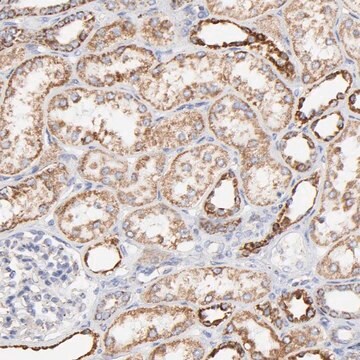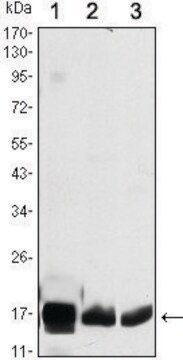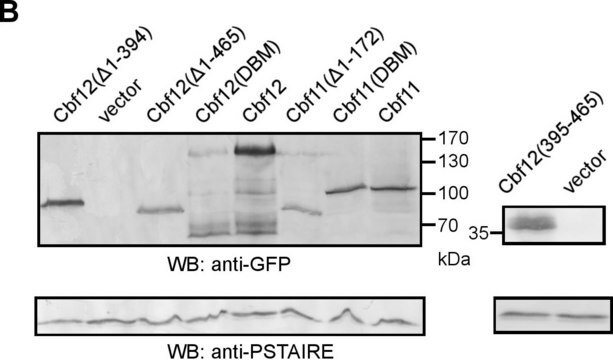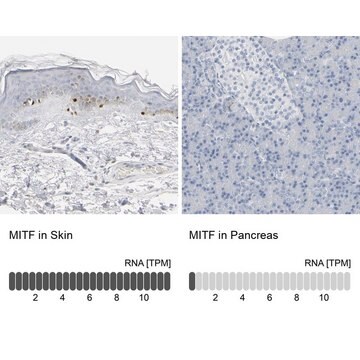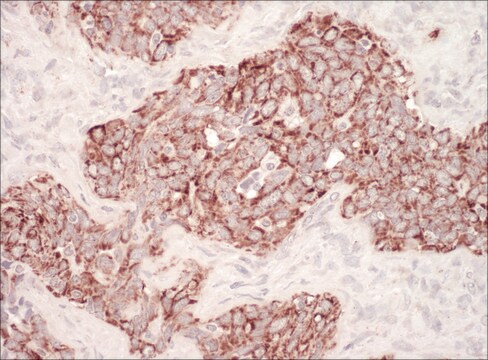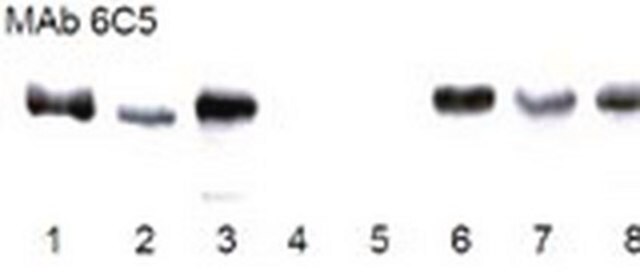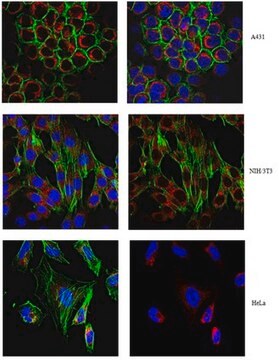AB10526
Anti-COX4 Antibody
from rabbit, purified by affinity chromatography
Synonyme(s) :
cytochrome c oxidase subunit IV isoform 1, cytochrome c oxidase subunit IV1, Cytochrome c oxidase polypeptide IV, cytochrome c oxidase subunit 4 isoform 1, mitochondrial
About This Item
Produits recommandés
Source biologique
rabbit
Niveau de qualité
Forme d'anticorps
affinity isolated antibody
Type de produit anticorps
primary antibodies
Clone
polyclonal
Produit purifié par
affinity chromatography
Espèces réactives
human
Conditionnement
antibody small pack of 25 μg
Technique(s)
immunohistochemistry: suitable (paraffin)
western blot: suitable
Numéro d'accès NCBI
Numéro d'accès UniProt
Conditions d'expédition
ambient
Température de stockage
2-8°C
Modification post-traductionnelle de la cible
unmodified
Informations sur le gène
human ... COX4I1(1327)
Description générale
Spécificité
Immunogène
Application
Apoptosis & Cancer
Apoptosis - Additional
Qualité
Western Blot Analysis: 0.1 µg/mL of this antibody detected COX4 in 10 µg of human fetal skeletal muscle tissue lysate.
Description de la cible
A non-specific band may be observed at ~58 kDa
Forme physique
Stockage et stabilité
Remarque sur l'analyse
Human fetal skeletal muscle tissue lysate
Autres remarques
Clause de non-responsabilité
Not finding the right product?
Try our Outil de sélection de produits.
Certificats d'analyse (COA)
Recherchez un Certificats d'analyse (COA) en saisissant le numéro de lot du produit. Les numéros de lot figurent sur l'étiquette du produit après les mots "Lot" ou "Batch".
Déjà en possession de ce produit ?
Retrouvez la documentation relative aux produits que vous avez récemment achetés dans la Bibliothèque de documents.
Articles
Loading controls in western blotting application.
Notre équipe de scientifiques dispose d'une expérience dans tous les secteurs de la recherche, notamment en sciences de la vie, science des matériaux, synthèse chimique, chromatographie, analyse et dans de nombreux autres domaines..
Contacter notre Service technique

